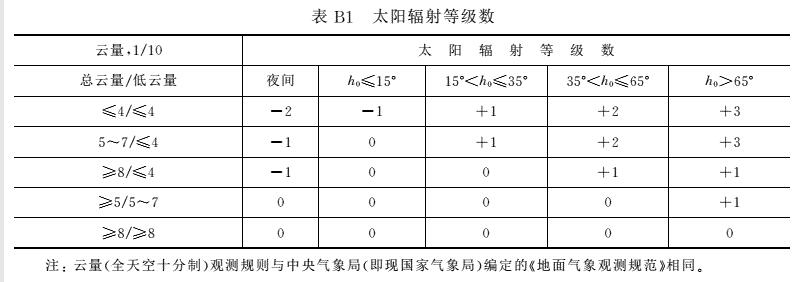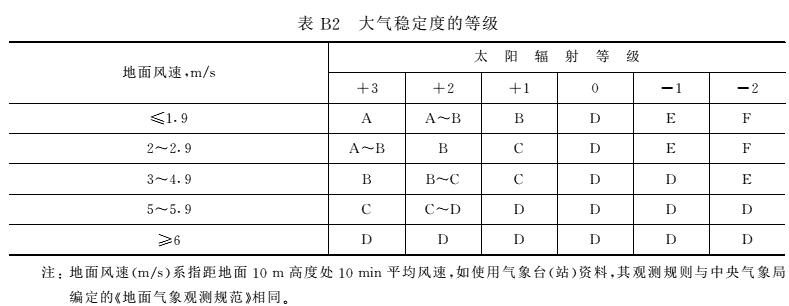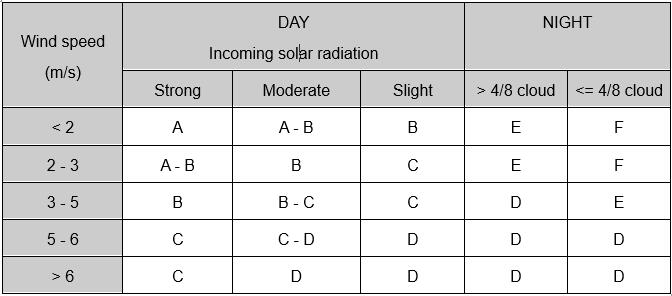帕斯奎尔稳定度软件有两种算法,一种是93大气导则算法,一种是原版的帕斯奎尔稳定度算法。
1、93导则修订算法
B1 大气稳定度分级
当使用常规气象资料时,大气稳定度等级可采用修订的帕斯奎尔(Passquill)稳定度分级法,分为强不稳定、不稳定、弱不稳定、中性、较稳定和稳定六级。它们分别表示为A、B、C、D、E、F。确定等级时首先由云量与太阳高度角按B1查出太阳辐射等级数,再由太阳辐射等级数与地面风速按B2查找稳定度等级。


2、原版帕斯奎尔稳定度分类
The tendency of the atmosphere to resist or enhance vertical motion and thus turbulence is termed stability. Stability is related to both the change of temperature with height (the lapse rate)driven by the boundary layer energy budget, and wind speed together with surface characteristics (roughness).A neutral atmosphere neither enhances nor inhibits mechanical turbulence. An unstable atmosphere enhances turbulence, whereas a stable atmosphere inhibits mechanical turbulence.
The turbulence of the atmosphere is by far the most important parameter affecting dilution of a pollutant. The more unstable the atmosphere, the greater the dilution.
Stability classes are defined for different meteorological situations, characterised by wind speed and solar radiation (during the day) and cloud cover during the night. The so called Pasquill-Turner stability classes (based on D. Bruce Turners Workbook of Atmospheric Dispersion Estimates include six stability classes:
1 A very unstable
2 B unstable
3 C slightly unstable
4 D neutral
5 E stable
6 F very stable
The stability classes can be (roughly and empirically) related to the driving forces wind and boundary layer energy budget through wind speed, solar radition, and cloud cover:

根据修正的太阳辐射强度R,计算辐射强度
- strong (> 700 W m−2)
- moderate (350-700 W m−2)
- slight (< 350 W m−2)
- 夜间(太阳辐射为负值)
3统计分析结果
在进行稳定度统计时,有A-B,B-C,C-D这三个半稳定度分级,而在SLAB模型和AFTOX模型中不存在该稳定度,因此软件有两个选项:
- 向不稳定方向提半级:此时A-B取A,B-C取B,C-D取C
- 向稳定方向提半级:此时A-B取B,B-C取C,C-D取D
用户可根据区域的土地利用类型提级,如果位于城区区域则大气趋向于不稳定,在农村区域大气趋向于稳定。